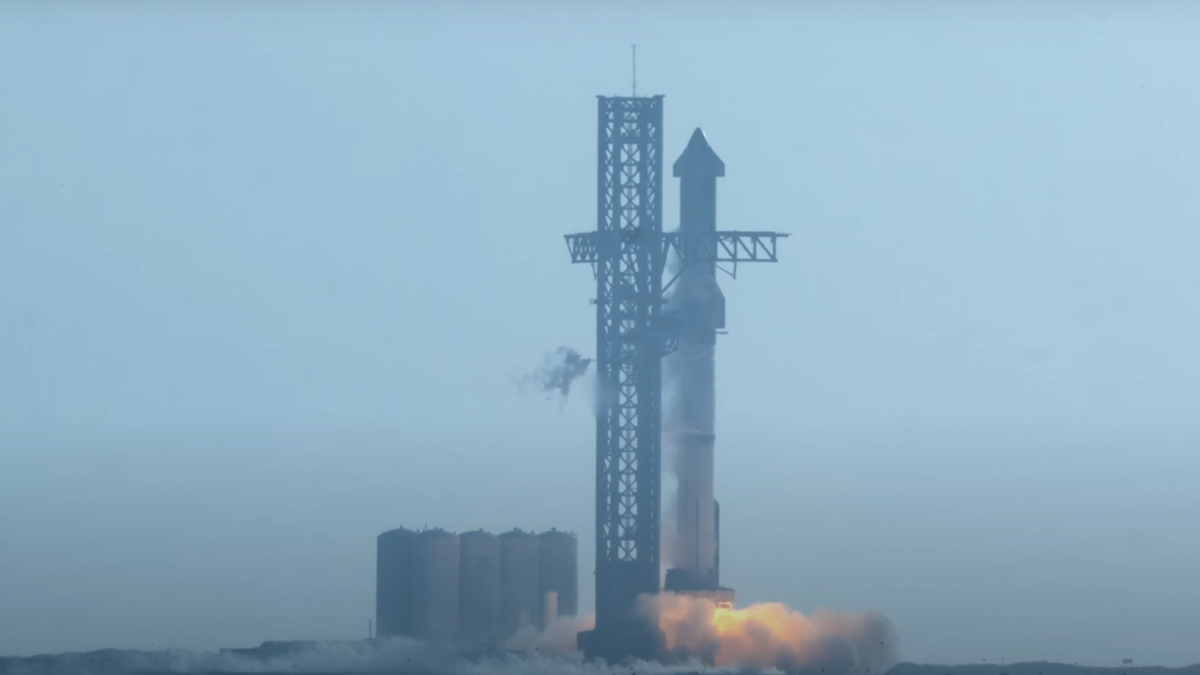
Two weeks ago, the Trump administration released a detailed description of its plan for getting American astronauts to the Moon by 2024. The program, now dubbed Artemis, incorporates the already funded first two launches of the Space Launch System (SLS) rocket and Orion capsule, presently scheduled for 2020 and 2022 respectively.
The Trump plan, however, does a great deal more, including a strategic reshaping of the proposed manned program that NASA has been pushing since 2017. That plan had called for constructing a space station to the Moon, dubbed the Lunar Gateway. Nearly every subsequent SLS mission through the 2030s was to focus on its construction and subsequent periodic occupancy.
Many expressed opposition to the Gateway project. It was called a wasteful and an unfocused boondoggle, designed to fund NASA’s big space contractors (Boeing and Lockheed Martin) while taking far too long to accomplish much too little. Worse, as designed, it would have frozen the United States in lunar orbit as we watched other countries land on the surface and build bases on the best lunar real estate which our own lunar probes had identified in the first place.
Trump’s Plan to Return to the Moon Is a Big Improvement
However, as was unveiled during the May 22 meeting of the National Space Council, Trump’s lunar proposal signals a major rejection of NASA’s boondoggle.
First and most importantly, the Trump administration has dumped Gateway as the major focus of our lunar ambitions, limiting it to its “absolutely minimum configuration” during the program’s first half-decade. While it will still have a habitable module, its focus will no longer be to have astronauts live there for any long period. Instead, it will serve as a rendezvous outpost where missions going to the Moon can meet and assemble.
The Trump administration has also shifted the focus of Artemis from a project built entirely by NASA, with minimal help from private companies, to one that includes a significant component of privately built rockets and spacecraft. Rather than depend almost entirely on SLS, the Trump administration will use both SLS and private rockets—dubbed by NASA as “Commercial Launch Vehicles” or CLVs.
The administration has made it clear that if SLS cannot meet its scheduled launch dates they will consider shifting to private companies entirely. Competition is built into the program’s fundamental structure.
America Cannot Afford to Fall Behind in Space
If the United States wishes to maintain its place as the world’s leading superpower, it is essential we participate in the coming effort to explore and colonize the solar system. The Chinese, Russians, Indians, and the Europeans all have programs that aim to land and establish manned bases on the Moon. These nations, as well as others, are also preparing to establish unmanned planetary programs to explore Mars and other bodies in the solar system.
I like to call this international effort the new colonial movement, comparable to the European “scramble for Africa” in the 1800s, but without any local populations to conquer. There is a political vacuum in space, and every nation in the world wishes to fill it. The United States must meet this challenge and do the same. As John F. Kennedy said, “We go into space because whatever mankind must undertake, free men must fully share.”
Unfortunately, NASA’s Recent History Isn’t Great
So, how to do we do it? Is the Trump proposal the right approach? A primary issue is funding. While Congress has provided the funds for those first two Artemis launches in 2020 and 2022, no funds have been provided for any further flights. In recent House hearings about the project, Democrats expressed significant skepticism. Some voiced outright opposition.
While it’s possible that this opposition stems from the same knee-jerk Democratic resistance to every Trump proposal, I think there is more to it. For the past 30 years, NASA’s track record on big projects has been terrible. Few have been finished on time and on schedule. As revealed in a Government Accountability Office report released last week, this track record has only gotten worse in recent years.
In fact, we need only look at SLS/Orion to see this. The concept was proposed by George W. Bush in 2004, with a goal of reaching the Moon by 2015. Instead, NASA won’t get its first manned SLS/Orion launch off any earlier than 2022, with a total cost exceeding $43 billion.
To repeat: It will have taken NASA 18 years and $43 billion to launch a single manned mission. We fought and won both World Wars in less time. It’s, therefore, no surprise that some in Congress are skeptical of the Trump Moon proposal. NASA’s track record certainly does not inspire confidence.
Plans Are Still Too Vague and Undefined
There are other worrisome aspects of NASA’s proposal. To meet Trump’s 2024 deadline, NASA has truncated its schedule to only one preliminary test flight. None are currently planned for its unbuilt lunar lander.
A plan like this would have been unacceptable to NASA’s engineers and management in the 1960s. Back during the Apollo years, NASA required a series of at least four preliminary missions leading up to any lunar landing, as well as testing the Apollo capsule and the lunar lander both in Earth and lunar orbit. Only then would they consider sending men to the moon’s surface.
Addition concerns arise out of the vagueness of the Artemis’s future following the planned 2024 lunar landing. On NASA’s Artemis webpage, the description of the goals and plans for each SLS launch post-2024 is disturbingly undefined: “NASA’s Space Launch System will send Orion and its crew to lunar orbit, where astronauts will conduct expeditions aboard the Gateway and on the lunar surface.”
In other words, neither NASA nor the Trump administration has any idea what they will do on the Moon beyond that 2024 landing. Regrettably, this sort of vagueness has been a hallmark of every presidential space proposal of the past half century. Since Kennedy’s 1961 speech committing us to a lunar landing before 1970, almost every president has wanted his own “Kennedy moment”—a space project fervently declaring our intention to go “somewhere” in space by some deadline.
In every case, those presidential declarations have failed. Instead, they all turned out to be expensive boondoggles. They’ve been very successful in funneling pork to congressional districts and giving the politicians who back them nice photo-ops—all while getting us nowhere in space.
This is probably the worst aspect of the president’s pitch. Its dependence on pork (SLS/Orion) and political opportunism (a lunar landing before the end of Trump’s second term) means it will almost certainly not get us to the Moon or Mars, despite NASA’s claims. Like all the past NASA manned projects since Apollo, it will do nothing but spend a lot of money.
Private Companies Should Take a Central Role
One portion of Trump’s proposal, however, is very laudable: the administration’s decision to increase the participation of the private sector in Artemis. If made the centerpiece of the program, hiring private companies to do much of what needs to be done would accomplish all the goals this nation requires in space faster and cheaper than NASA.
For example, last week NASA announced that it is buying three privately built unmanned lunar landers to get its science payloads to the Moon. The expected total cost for all three missions—$253.5 million—is far less than what NASA expected to spend for its own (now canceled) Resource Prospector lander. Additionally, these new contracts will put landers at three lunar locations, not one.
Most importantly, by having NASA act as a customer instead of the builder, the Trump administration has helped jumpstart an entirely new industry of private companies building planetary probes. Using private rockets rather than the government-owned SLS stimulates the private rocket industry and promotes competition, innovation, and efficiency. Just as the competition fostered by SpaceX significantly lowered launch costs, this scheme should help save taxpayers a lot of money.
If President Trump wants our nation to be a dominant player in the coming exploration of the solar system, he should start by dumping the government pork (SLS). Following that, as many individual American citizens and private companies as possible should be encouraged to contribute to space exploration. Rather than make his effort a government “program” run and built by government bureaucrats, Trump needs to foster a creative and vibrant space-faring industry; one that is competitive, innovative, and privately owned. If he can do that, the stars will be ours.









